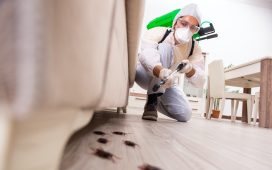Schools are at significant risk when pest infestations enter a classroom and deteriorate the bubble of student well-being. Pests like rodents, insects, and other bugs can transmit diseases, cause allergies, and introduce unsanitary conditions that impact academic progress and general health and wellness. One of the most significant reasons many educational institutions repeatedly encounter pest issues is the staff and students’ ignorance of prevention.
Schools should implement training programs that reach the whole school environment. These measures should center on prevention, detection, and response. Learn more with our blog post and find tips to raise awareness and improve hygiene education among kids.
How Can Schools Raise Awareness and Promote Hygiene Education
-
Implementing Comprehensive Staff Training Programs
Proper training should be conducted for janitors, administrative staff, and teachers to identify signs of notorious pest activity. Workshops should be held frequently to outline known pest species, which places they are commonly found, and how to report them efficiently. Educating staff members is very important since they are the first line of defense against infestations.
Demonstration training of different inspection methods and proper sanitation protocols must be made a part of training programs. With an understanding of how their routines throughout the day play a role in preventing pest entry, staff can improve their efforts to maintain cleanliness.
-
Creating Student-Led Hygiene Campaigns
Initiatives where the students lead the initiatives and make hygiene education fun and unforgettable find good, concerted responses from students. Schools may undertake poster contests, presentations, and other activities that educate and promote appropriate food storage, waste disposal, and hygiene practices.
-
Establishing Regular Inspection and Maintenance Schedules
Regular inspections of the facility can assist in identifying potential entry points of pests and breeding grounds before they get out of control. Weekly checklists that encompass all areas, including the cafeteria, storage areas, bathrooms, and anywhere else outside that pests congregate, should be created by schools.
Maintenance staff should have clear protocols for sealing openings, repairing leaks, and eliminating architectural deficiencies that attract pests. Biohazardous waste should be taken care of regularly to prevent issues from growing into costly infestations that interfere with educational activities.
-
Developing Clear Communication Channels
Establishing lines of communication among all parties involved, including students, parents, staff, and administration, is a key step in effective pest management. Reporting systems should be set up in schools to report any pest exposure or sanitation issues as quickly as possible.
Include hygiene tips and information about the school’s cleanliness efforts in monthly newsletters and parent meetings. Finally, when families understand the crucial role of pest prevention and care more about it, they help schools promote the message, thus further extending their efforts from the premises and repeating the message at home.
-
Integrating Hygiene Education into the Curriculum
Pest biology, disease transmission, and disease prevention can be taught quite naturally during science and health classes. These concepts become more exciting and easier to remember with hands-on experiments and research projects.
The best approach is cross-curricular, which means hygiene topics will be introduced not just across one subject area in a single class but over the school year in multiple subjects. The repetition allows for saving the information in your memory and using it in different contexts.
Seek Professional Assistance
By prioritizing pest awareness and hygiene education, schools ensure their communities create safer, more productive learning environments. Those approaches work well, as parents and local authorities will always trust the establishment that keeps them up to date about health issues and also reduces maintenance costs.
Of course, even the most well-rounded school-based programs benefit from the guidance and support of professionals. Pest control professionals can assess unique vulnerabilities in a specific facility, provide targeted solutions, and help with monitoring that goes beyond educational measures.
Contact certified professional pest control experts to create a prevention plan specifically suited for your school to combat these issues.











